
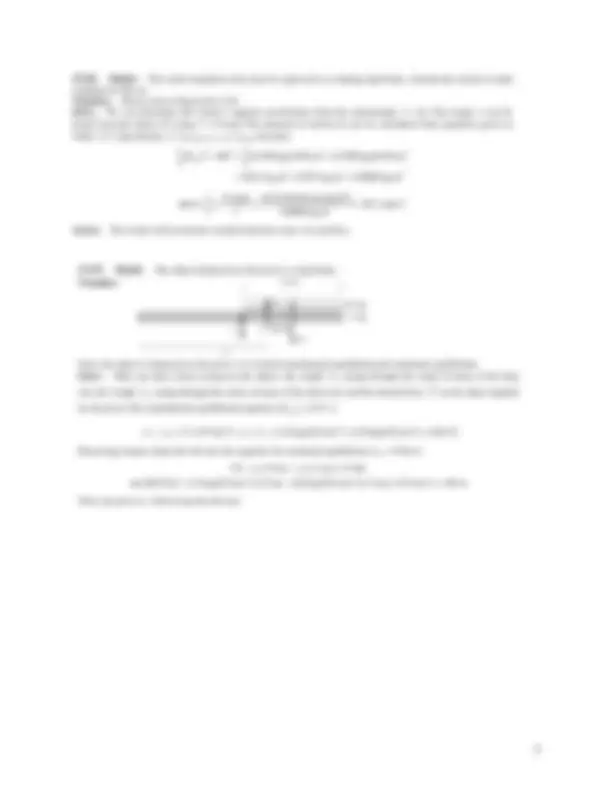
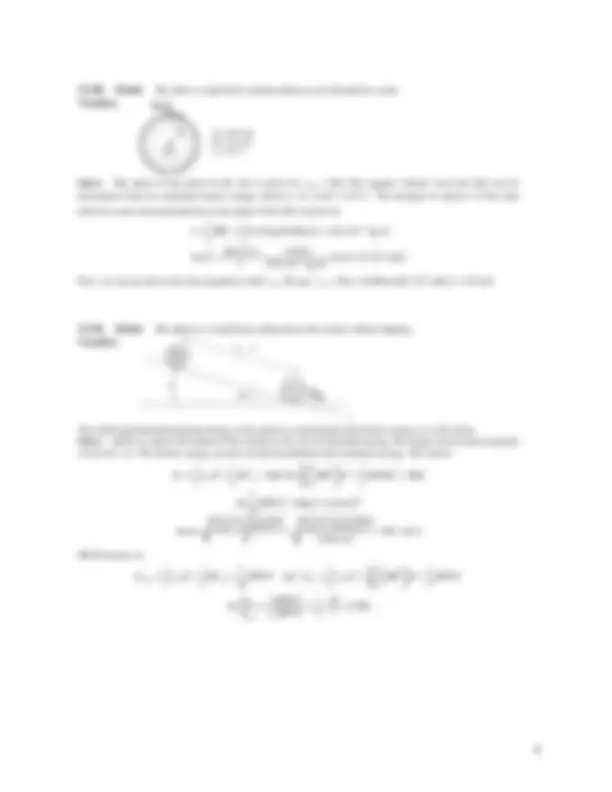
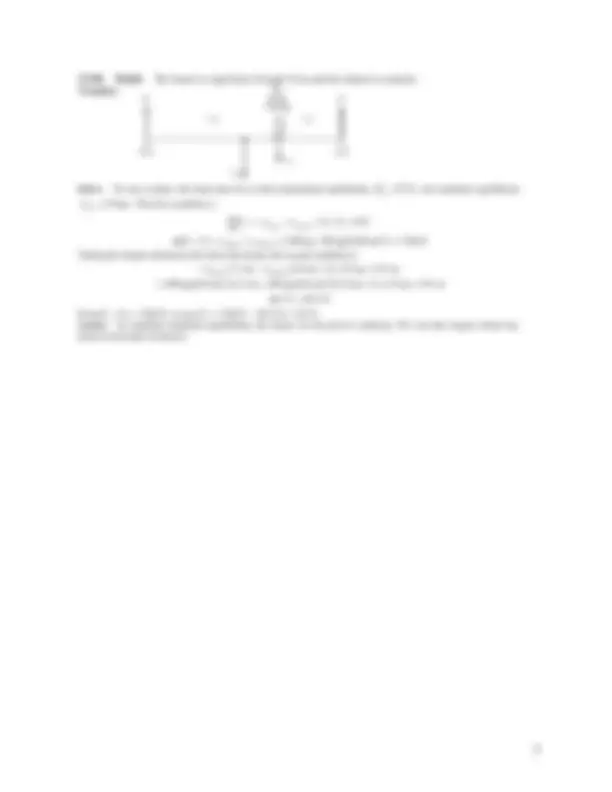
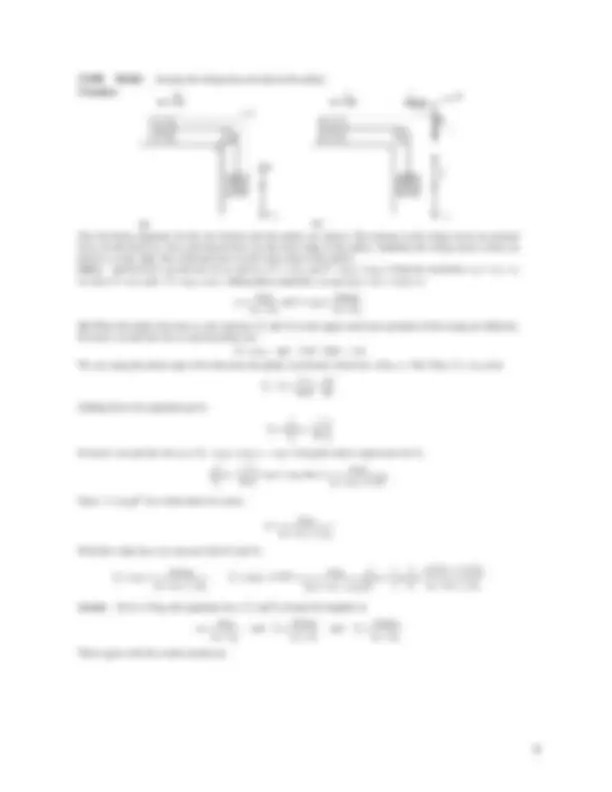
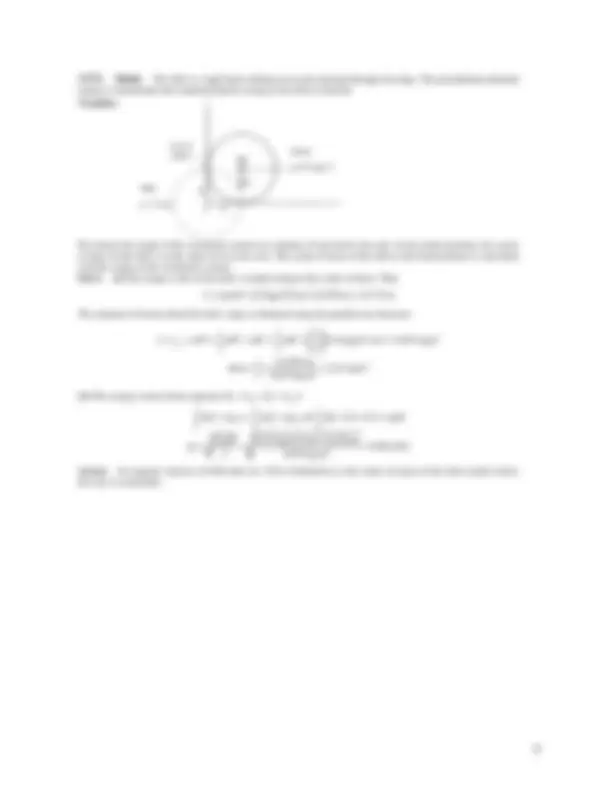


Study with the several resources on Docsity

Earn points by helping other students or get them with a premium plan


Prepare for your exams
Study with the several resources on Docsity

Earn points to download
Earn points by helping other students or get them with a premium plan
Community
Ask the community for help and clear up your study doubts
Discover the best universities in your country according to Docsity users
Free resources
Download our free guides on studying techniques, anxiety management strategies, and thesis advice from Docsity tutors
Solutions to various mechanics problems involving rigid bodies in motion. Topics include kinematics equations, moment of inertia, and energy conservation. The problems involve calculating angular acceleration, center of mass, and moment of inertia for different shapes and configurations.
Typology: Summaries
1 / 9

This page cannot be seen from the preview
Don't miss anything!






Visualize:
The figure shows the drill’s motion from the top. Solve: (a) The kinematic equation ωf = ωi + α( t f – t i) becomes, after using ωi = 2400 rpm = (2400)(2 π)/60 = 251. rad/s, t f – t i = 2.5 s – 0 s = 2.5 s, and ωf = 0 rad/s,
(b) Applying the kinematic equation for angular position yields: 2 f i i f i f i 2 2
0 cm), (10 cm, 10 cm), and (10 cm, 0 cm), respectively. Solve: The coordinates of the center of mass are
A A B B C C cm A B C A A B B C C cm A B C
(100 g)(0 cm) (200 g)(10 cm) (300 g)(10 cm) 8.33 cm (100 g 200 g 300 g) (100 g)(0 cm) (200 g)(10 cm) (300 g)(0 cm) 3.33 cm (100 g 200 g 300 g)
m x m x m x x m m m m y m y m y y m m m
Visualize:
The radius of the disk is 10 cm and the disk rotates on an axle through its center. Solve: The net torque on the axle is
= (30 N)(0.10 m) sin (− 90 °) + (20 N)(0.05 m) sin 90° + (30 N)(0.05 m) sin 135° + (20 N)(0.10 m) sin 0° = −3 N m + 1 N m + 1.0607 N m = −0.939 N m Assess: A negative torque means a clockwise rotation of the disk.
Visualize: Please refer to Figure Ex13.19.
Solve: (a) (^) cm
(0.100 kg)(0 m) (0.200 kg)(0.06 m) (0.100 kg)(0.12 m) 0.060 m 0.100 kg 0.200 kg 0.100 kg
i i i
m x x m
2 2
cm
(0.100 kg)(0 m) (0.200 kg) (0.10 m) (0.06 m) (0.100 kg)(0 m) 0.040 m 0.100 kg 0.200 kg 0.100 kg
i i i
m y y m
(b) The moment of inertia about an axis through A and perpendicular to the page is
2 2 2 2 2 2
(c) The moment of inertia about an axis that passes through B and C is
2 2 2 2 I BC (^) = m A (0.10 m) − (0.06 m) =0.00128 kg m
Assess: Note that mass m A does not contribute to I A, and the masses m B and m C do not contribute to I BC.
Visualize:
about its center and perpendicular to the plane of the disk is given by
2 2 5 2
2 5 2
ω ω
−
−
Visualize:
The initial gravitational potential energy of the sphere is transformed into kinetic energy as it rolls down. Solve: (a) If we choose the bottom of the incline as the zero of potential energy, the energy conservation equation will be K f = U i. The kinetic energy consists of both translational and rotational energy. This means
2 2 2 2 2 f cm cm
2 2
10 10 7 7 2 2
(2.1 m)sin 25 10 (2.1 m)(sin 25 ) (2.1 m)(sin25 ) 88.1 rad/s (0.04 m)
K I Mv Mgh MR M R Mgh
MR Mg
g g R
(b) From part (a)
2 2 2 2 2 2 2 2 2 total cm cm rot cm
1 2 2 rot 5 7 2 2 total 10
and 2 2 10 2 2 5 5 1 10
5 7
K I Mv MR K I MR MR
Visualize:
and rotational equilibrium
∑ Fy^ = −^ w beam^ −^ w student^ +^ F 1^ +^ F 2 =0 N
Taking the torques about the left end of the beam, the second condition is
− w beam (1.5 m) – w student (2.0 m) + F 2 (3.0 m) = 0 N m − (100 kg)(9.8 m/s^2 )(1.5 m) – (80 kg)(9.8 m/s^2 )(2.0 m) + F 2 (3.0 m) = 0 N m
From F 1 + F 2 = 1764 N, we get F 1 = 1764 N – 1013 N = 751 N. Assess: To establish rotational equilibrium, the choice for the pivot is arbitrary. We can take torques about any point on the body of interest.
13.60. Model: The ladder is a rigid rod of length L. To not slip, it must be in both translational equilibrium
( F net = 0 N)
r r
Visualize:
On the other hand,
and the static frictional force f s.
r
of the ladder acts through
the center of mass of the ladder.
are
∑ Fx^ =^ n 2^ −^ f s^ =^ 0 N^ ⇒^ f s^ =^ n 2^ ∑ Fy^ =^ n 1^ −^ w^ =^ 0 N⇒^ n 1^ = w
through this point and have no torque about it. The net torque about the bottom corner is
min s min min min s
θ μ θ θ θ μ
13.68. Model: Assume the string does not slip on the pulley.
Visualize:
The free-body diagrams for the two blocks and the pulley are shown. The tension in the string exerts an upward force on the block m 2 , but a downward force on the outer edge of the pulley. Similarly the string exerts a force on block m 1 to the right, but a leftward force on the outer edge of the pulley. Solve: (a) Newton’s second law for m 1 and m 2 is T = m 1 a 1 and T – m 2 g = m 2 a 2_._ Using the constraint – a 2 = + a 1 = a , we have T = m 1 a and − T + m 2 g = m 2 a. Adding these equations, we get m 2 g = ( m 1 + m 2 ) a, or
2 1 2 1 1 2 1 2
(b) When the pulley has mass m , the tensions ( T 1 and T 2 ) in the upper and lower portions of the string are different. Newton’s second law for m 1 and the pulley are:
(^2 1 )
I a aI T T R R R
Adding these two equations gives
(^2 1 )
2 (^1 2 2 )
Since I = 12 m R p^2 for a disk about its center,
2 1 2 1 p 2
With this value for a we can now find T 1 and T 2 :
( )
1 2 2 2 2 (^1 12 p) 1 1 1 2 1 1 1 p 1 1 2 2 p (^1 2 2) p 1 2 2 p
Assess: For m = 0 kg, the equations for a , T 1 and T 2 of part (b) simplify to
2 1 2 1 2 1 2 1 2 1 2 1 2
These agree with the results of part (a).